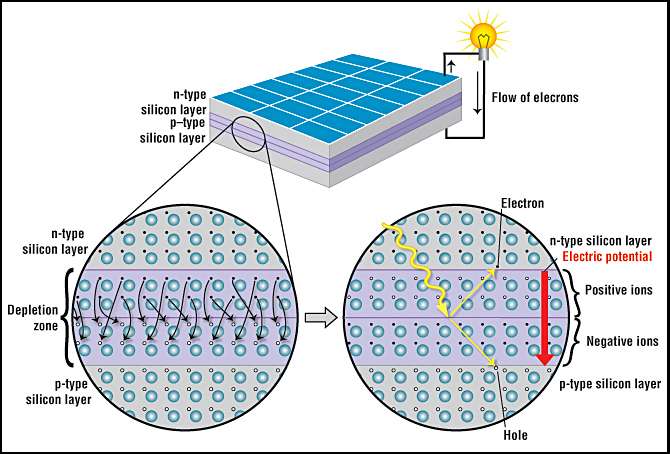Solar panels, often seen adorning rooftops or sprawling across fields, harness the abundant energy of the sun and convert it into electricity that powers our homes, businesses, and even entire communities. In this guide, we will delve into the fascinating mechanics behind solar panels, explore their benefits, and unravel the technology that enables this renewable energy source to thrive in a world hungry for cleaner, greener power solutions.
Understanding the Basics
At its core, a solar panel is a marvel of modern engineering designed to capture sunlight and convert it into usable electricity. The magic happens through a process called photovoltaic (PV) conversion. Each solar panel is composed of individual solar cells, typically made from silicon, which possess a remarkable ability to generate an electric current when exposed to sunlight.
The Photovoltaic Effect
The key to solar power lies in the photovoltaic effect. When sunlight strikes the surface of a solar cell, it energizes the electrons within the silicon atoms, causing them to break free from their atoms and flow through the material. This flow of electrons creates an electric current, which can then be harnessed to power electrical devices.
From Sunlight to Electricity
But how does sunlight transform into electricity within a solar cell? It all starts with the structure of the cell itself. Each solar cell consists of two layers of silicon: the N-type layer, which contains an excess of electrons, and the P-type layer, which contains an excess of positively charged “holes” (locations where an electron is missing).
When sunlight strikes the solar cell, it excites electrons in the N-type layer, causing them to jump across to the P-type layer. This movement of electrons creates a voltage difference between the two layers, generating an electric field. When an external circuit is connected to the solar cell, this electric field drives the flow of electrons, creating an electric current.

Turning Sunlight Into Power
To harness the electricity generated by solar panels, multiple solar cells are connected together to form a solar module, or what we commonly refer to as a solar panel. These panels are then mounted on rooftops or installed in open areas where they can receive maximum sunlight exposure.
As sunlight strikes the surface of the solar panels, the interconnected cells work in unison to produce direct current (DC) electricity. This DC electricity is then fed into an inverter, which converts it into alternating current (AC) electricity, suitable for use in homes and businesses.
The Power of the Sun, Rain, or Shine
One of the most remarkable aspects of solar panels is their ability to generate electricity even on cloudy days or in less-than-perfect weather conditions. While direct sunlight produces the optimal amount of electricity, solar panels can still generate power from diffused sunlight and indirect sunlight, ensuring a steady supply of clean energy throughout the year.
Conclusion
And there you have it—a beginner’s guide to the inner workings of solar panels. By harnessing the power of the sun, these ingenious devices offer a sustainable and renewable source of electricity for homes, businesses, and communities around the world. As we continue to embrace clean energy solutions, solar panels stand at the forefront of a brighter, greener future.
Join us as we journey towards a world powered by the boundless energy of the sun. Together, we can illuminate the path to a more sustainable tomorrow.
